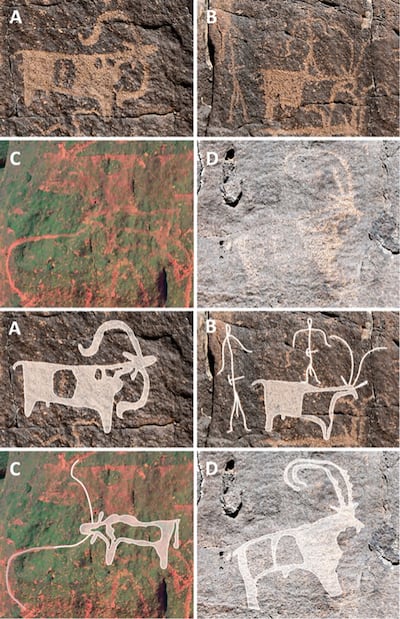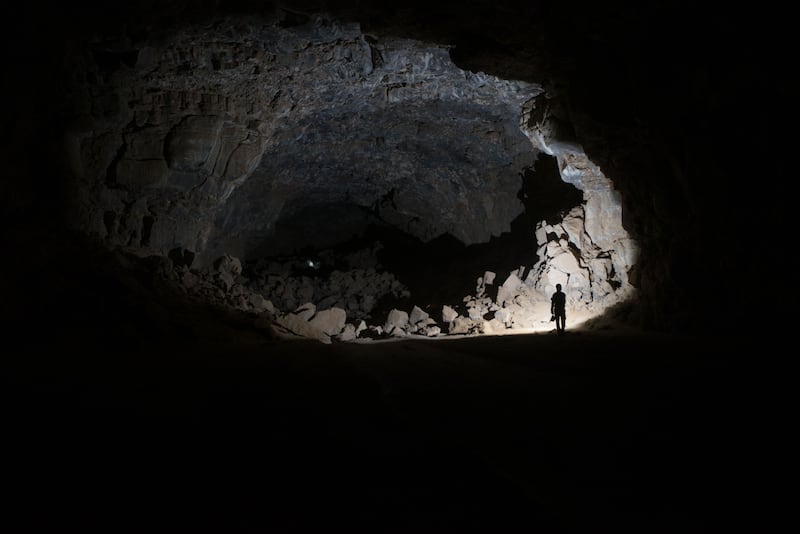A large cave complex in Saudi Arabia, created by lava escaping a nearby volcano, provided valuable shelter for humans herding livestock over at least the past 7,000 years, according to a study published in the journal Plos One.
Previous research in northern Arabia has discovered a diverse archaeological record, but the timing of human occupation and connections with the nearby Levant region remain largely misunderstood due to poor preservation of remains in the area’s arid conditions.
The study by Griffith University in Australia and Germany's Max Planck Institutes of Geoanthropology, Chemical Ecology, and Biogeochemistry focused on investigating caves and other underground settings where ancient materials are sheltered from sun, wind and fluctuations in temperature.
Research concentrated on an archaeological site created by a lava vent called Umm Jirsan in the volcanic field of Harrat Khaybar in Saudi Arabia, about 125km north of Madinah.
In the extensive lava cave complex, researchers found artefacts, rock art and skeletal remains that document repeated human occupation over at least the past 7,000 years.
The presence of sheep and goat remains show the site was an important resource for keepers of livestock, while analysis of human remains reveals an increase over time of a diet that included plants such as cereal and fruit, possibly linked to a rise in oasis agriculture in the Bronze Age.
The authors conclude that Umm Jirsan was probably not a permanent home, but a valuable stopping point for people travelling between oasis settlements.

The lava cave complex and other natural shelters were important resources for communities surviving in a challenging environment and offer a key source of archaeological information about the history of human occupation of Arabia.
“Exploring Arabia’s hidden past, our study uncovers millennia of human occupation within and around the Umm Jirsan lava tube, shedding light on ancient lifestyles and adaptations to environmental change in this harsh desert environment," the authors said.
One author, Dr Matthew Stewart of Griffith University, said: "In addition, it suggests that we as archaeologists should investigate underground settings as these will likely fill in some of the gaps in the palaeobiological and archaeological records that currently exist.
"These sites may have been important places of refuge as they provide shelter from the elements in an otherwise dry and harsh environment.
"They also act as excellent reservoirs of water, and so may have provided important resources to pastoralists.
"We plan to do more fieldwork at lava tubes, and in caves more generally, across Arabia."






